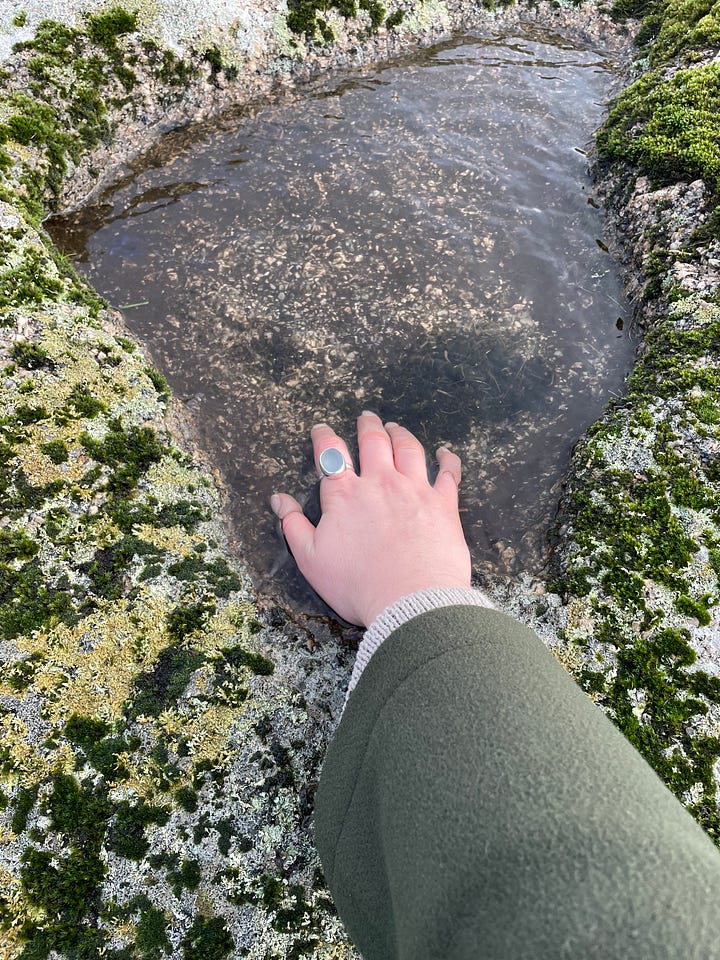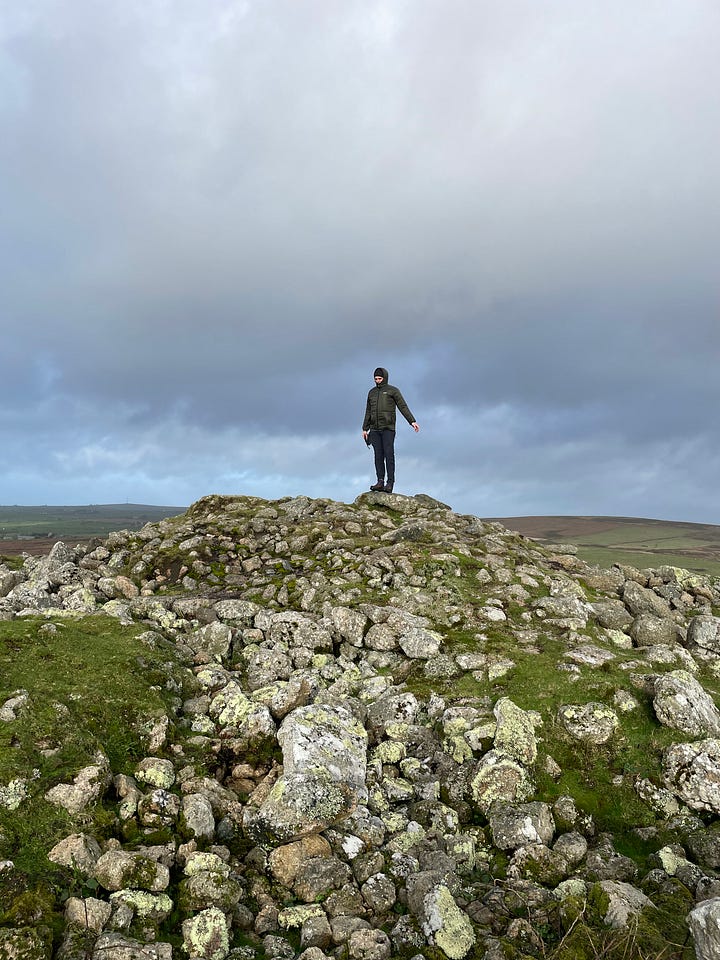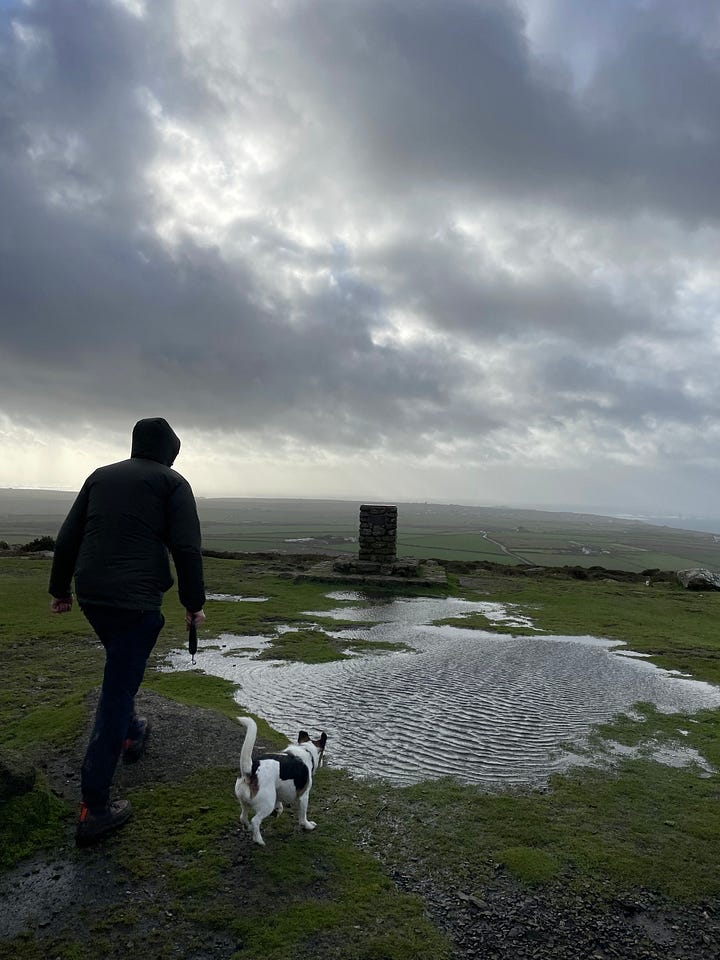Carn Euny, Sancreed, St Just and Carn Brea

On the second day of this year I persuaded Ben to venture out of our dwelling and brave the strong winds and possible showers, in search of a few places I had visited very happily, with my good friend Katie in May last year. Which Ben had never been to.
First on our list was a drive through twisting lanes to get to Carn Euny. The remains of an Iron Age settlement which was occupied until Roman times.
This area of Cornwall holds so much Anthropological history, it truly amazes me. You drive down a bumpy little track, which almost feels as though you are trespassing, and then you turn into a wooded, driveway.
There is enough for maybe 3 cars to park on the left and a tiny wooden sign to suggest that you are in the right place after all. On our last visit we were the only ones here, and we seem to be lucky again. Although the swirling winds which have been tearing through Cornwall the past few days, perhaps have deterred the sensible ones.
You then take a pathway alongside a house, waving Hydrangea stems overhead bend to the wind, through a field or two and you have arrived.
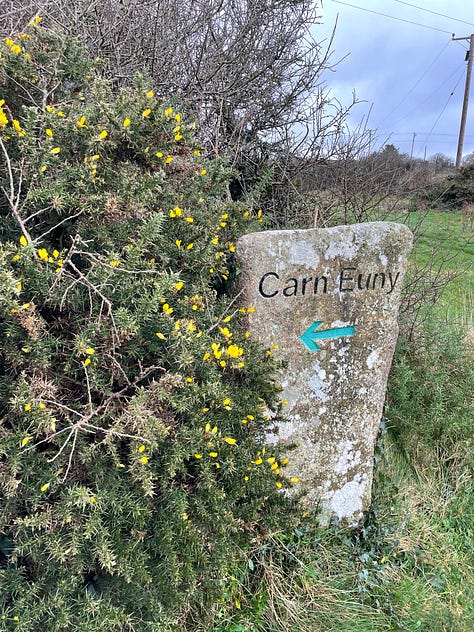
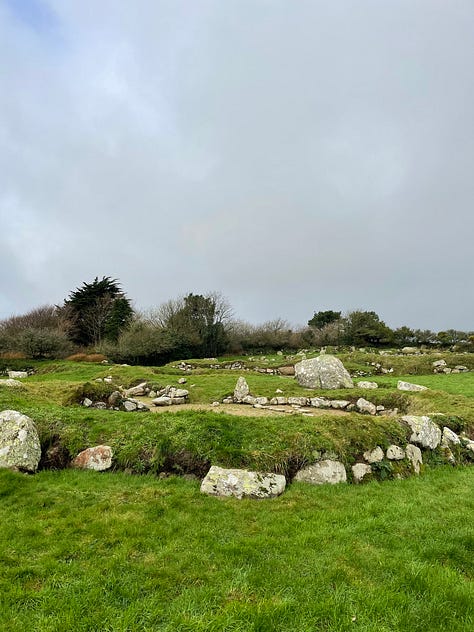
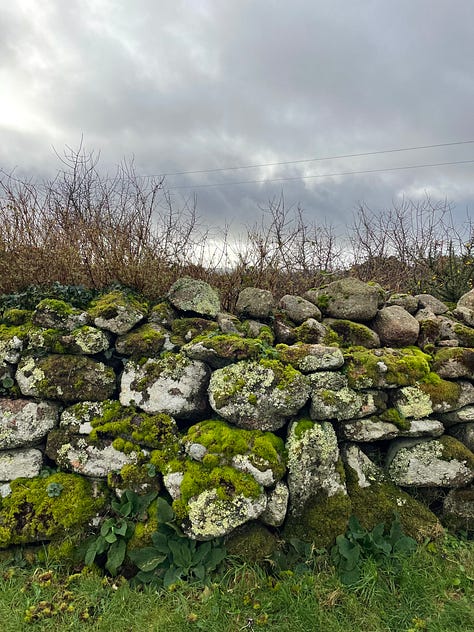
It is incredible to look at this part of the field and to imagine that all these mossy stone ruins, were once Iron Age huts. “Court-yard houses” to be precise, a building type unique to the far west of Cornwall. You will notice that there are many megaliths, standing stones, in Cornwall. Remaining from the Stone Age and Neolithic times. All with spiritual and ritualistic meaning, some with no known explanation. It is quite wonderful to imagine those who survived these wild and almost uninhabitable parts of Cornwall, in such simplistic ways of living.
Due to the acidic soil here, all traces of animal bones, domestic remains and iron tools have been destroyed. However various remains of stone tools and pottery have been found here. The settlement lies very close by to an ancient trackway, which has links to Lands end. The site is perhaps most renowned for its long underground passage, known as a “Fogou”, which comes from the Cornish word for cave. The real purpose of the Fogou is unknown, but you could make a guess that they were used for storing food.
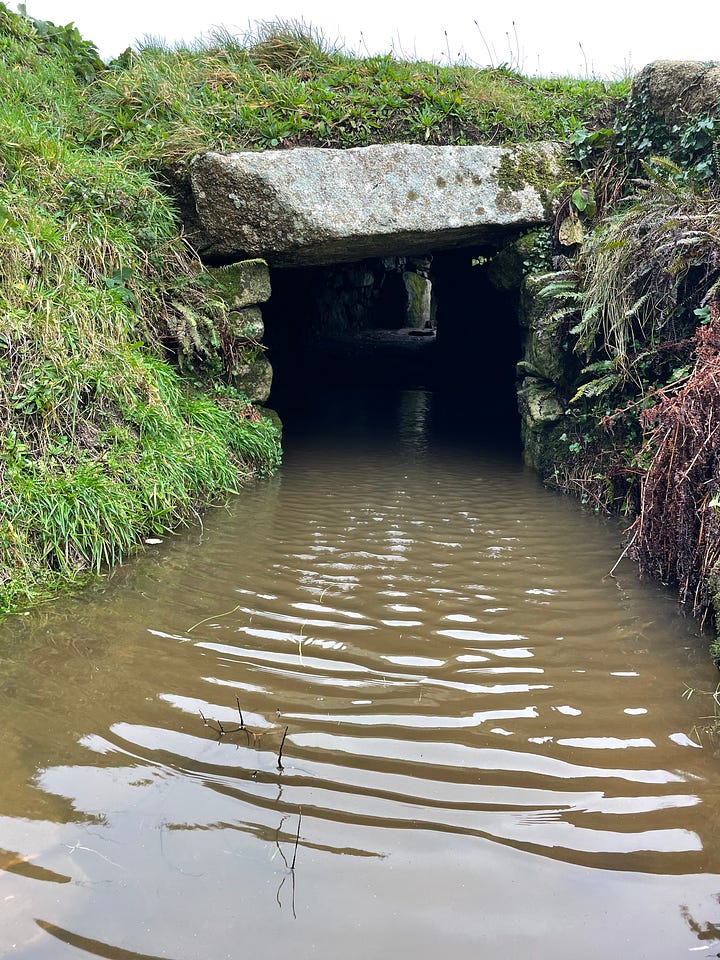


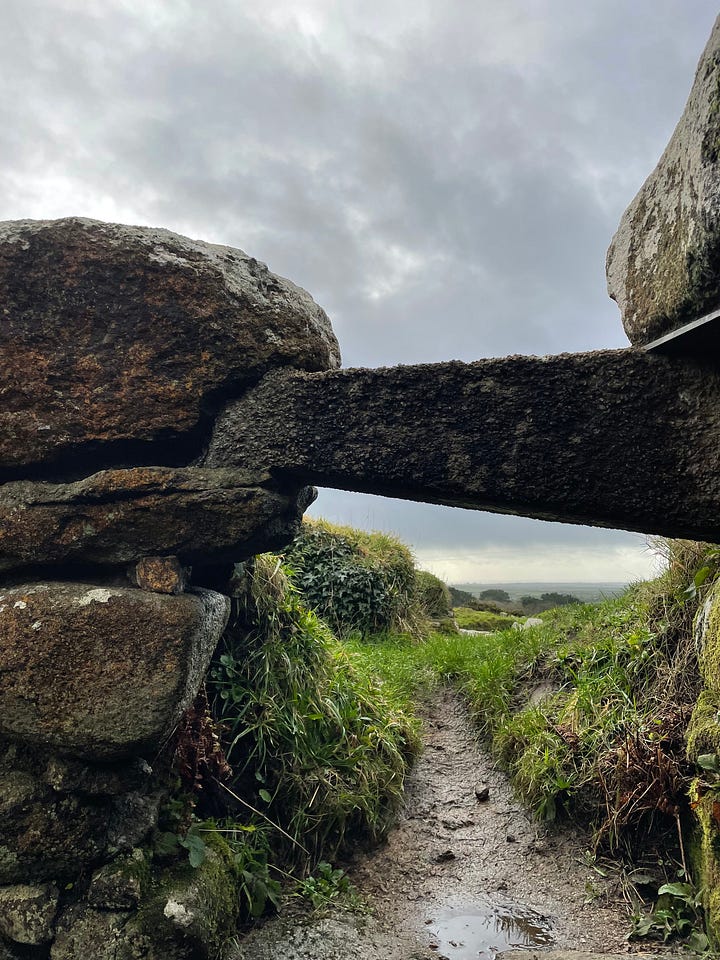
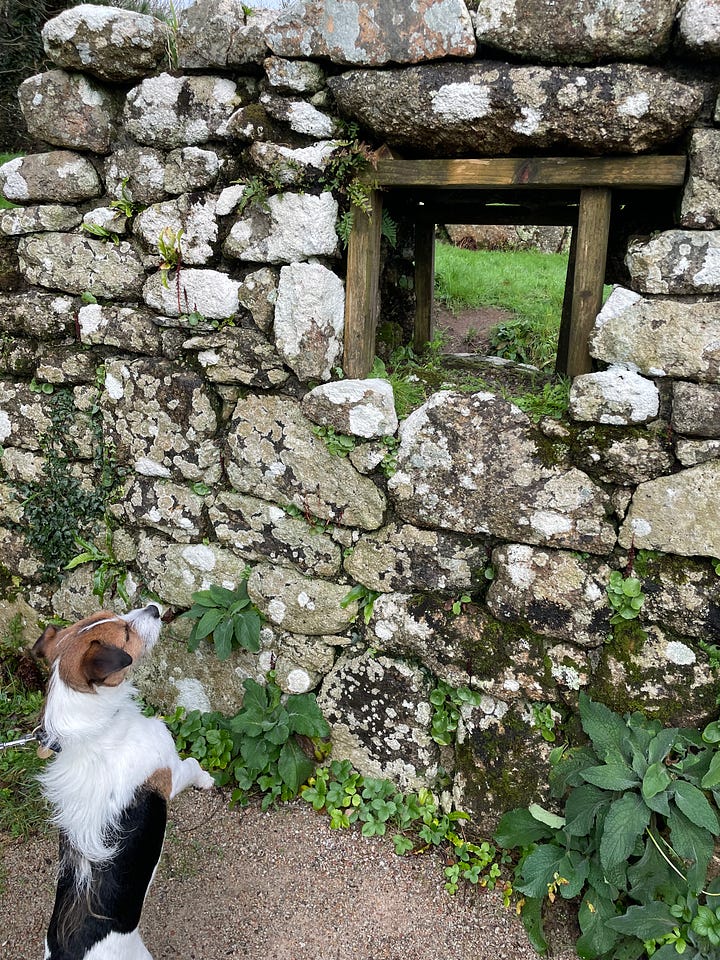
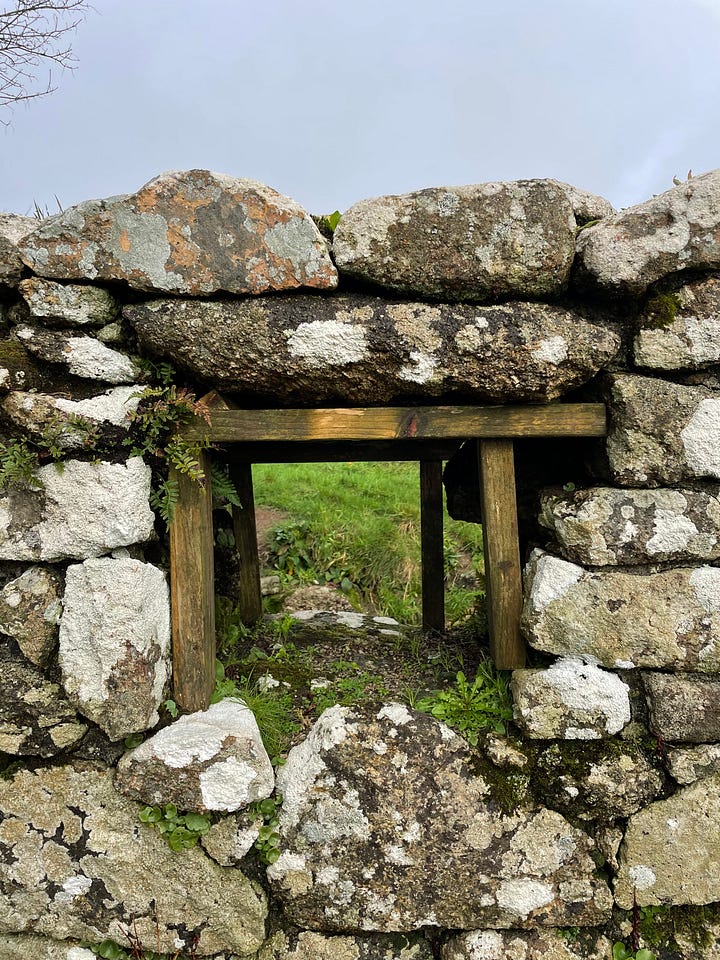
It is incredible to think that until 1960 this village was mainly covered in bramble, ferns and furze.
In May there were Foxgloves, bluebells and cow parsley growing through the stones, self seeded in every crevice, but in the depths of Winter it is quite bleak here. Just a mass of stone and moss, lichen bare branches and Hydrangea heads, the only colour exuded from the hedgerows of yellow Gorse.
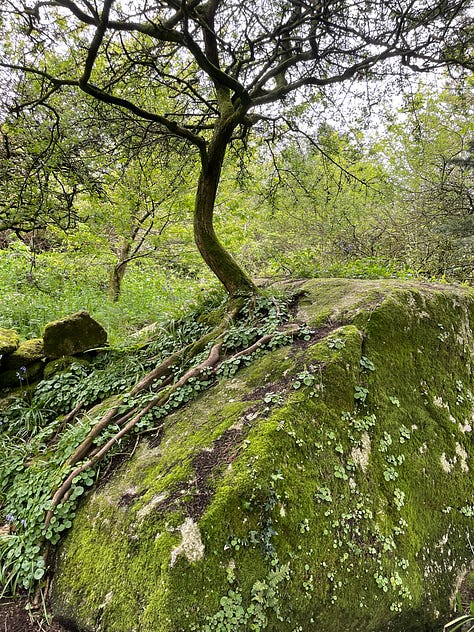
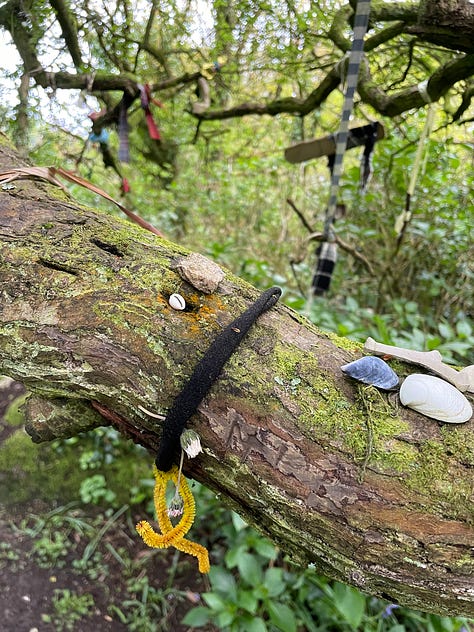
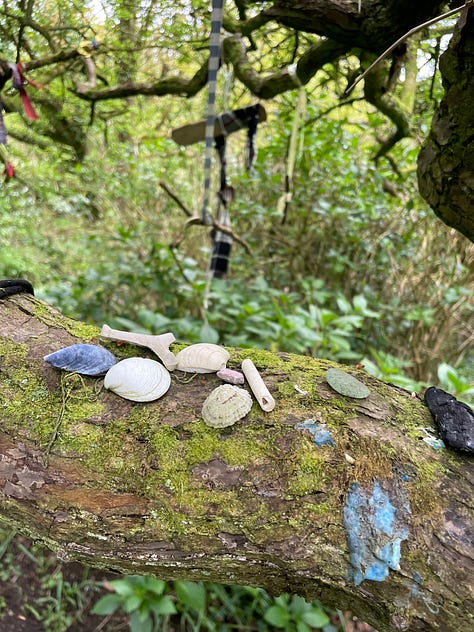
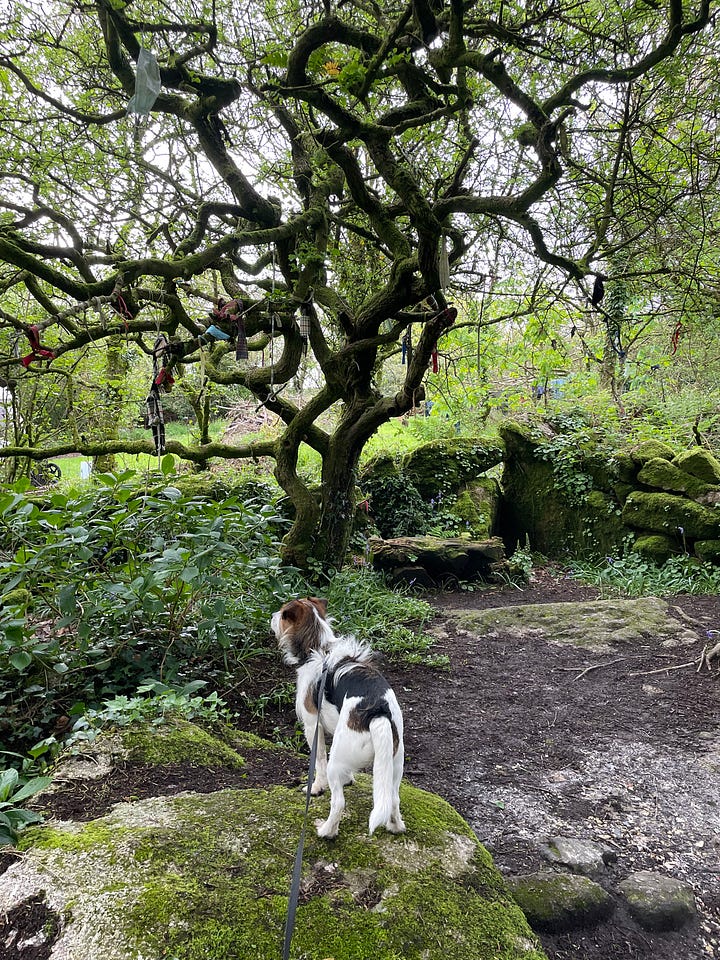
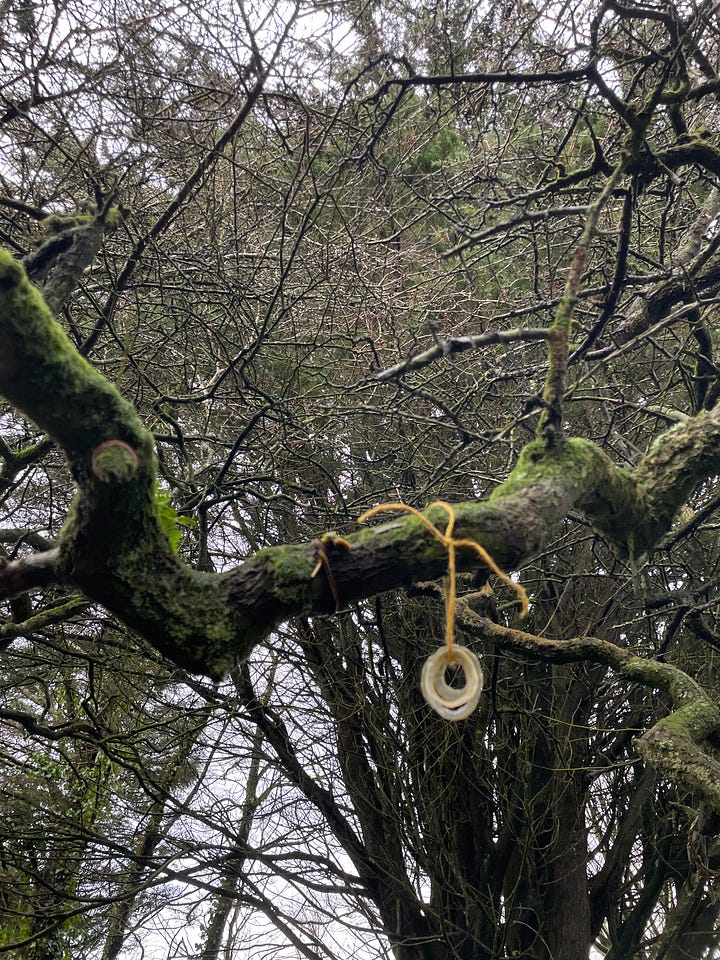
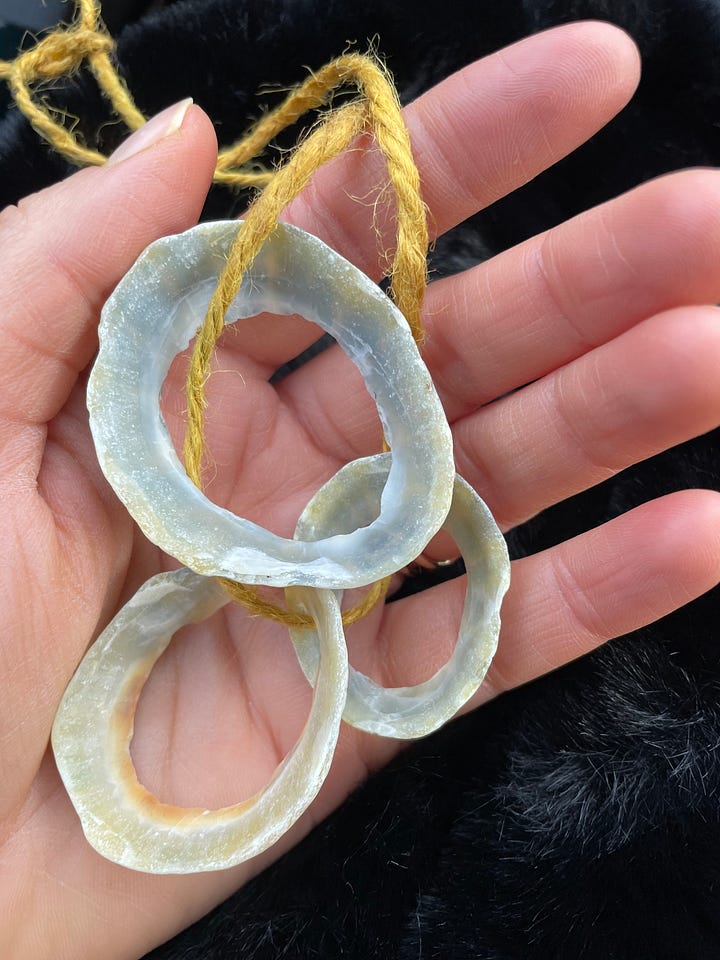
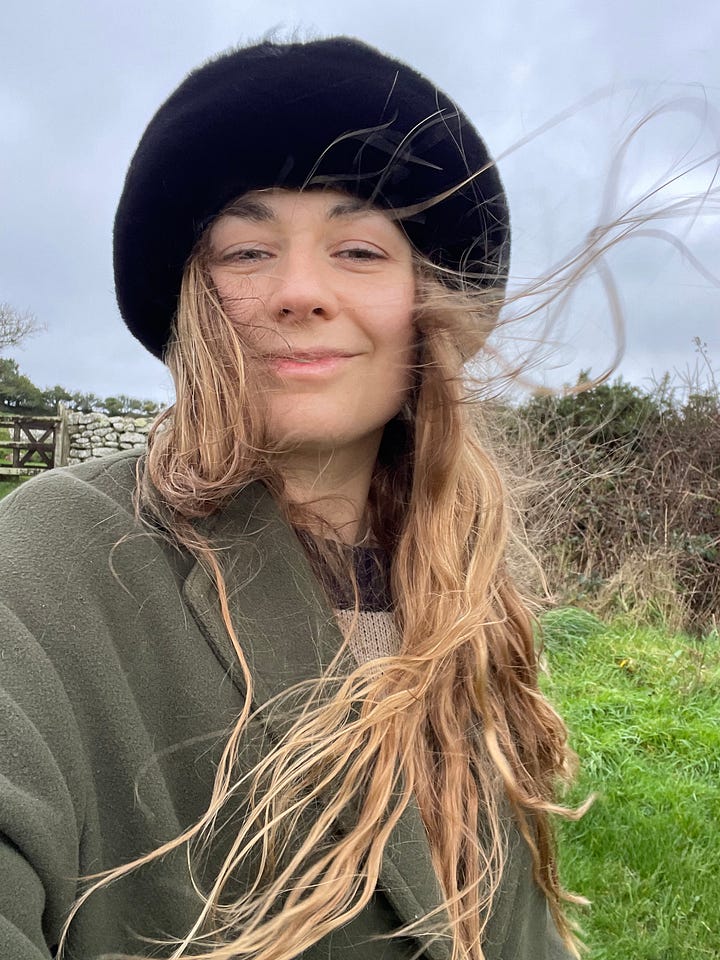
We then walked a very boggy woodland path to Chapel Euny, the holy well. I remembered all the offerings and ribbons hanging from the elder tree, so this time I came prepared. 3 shells I had found on the beach that morning, with holes in the centre, joined together with twine, from Ben, Kipper and I.
Last time we came Katie and I had to part with coins and precious Cowrie shells we had in our pocket, as we were not prepared.
The well here is likely to have been here since very early times. It takes water from the dammed up stream, which runs from here, through other pre historic sites and to Lamorna Cove. The well is said to have incredible healing powers, and particularly in the first half of the month of May.
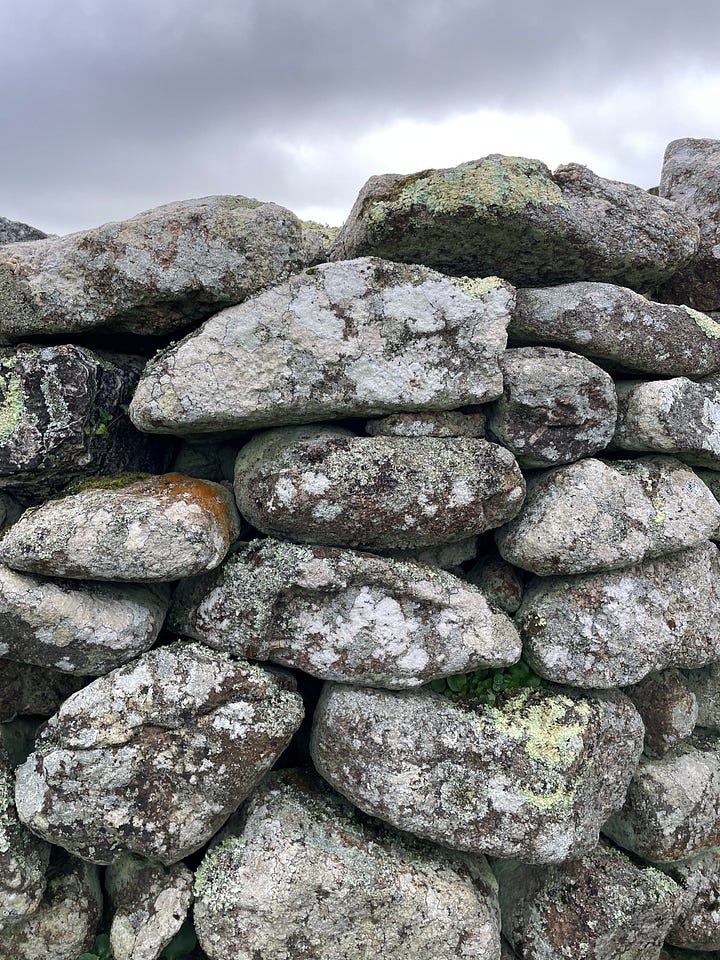
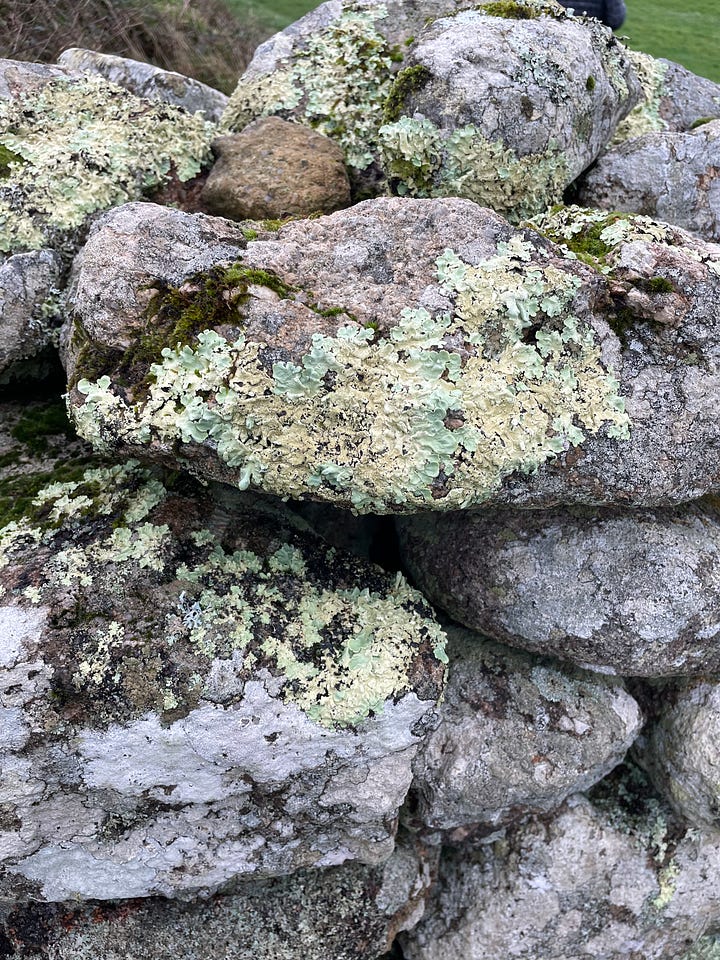
The well, is named after St Euny, who appears to have more churches and chapels dedicated to him than any other local saint. These wells with life sustaining qualities, became associated with the Earth-Mother. Wells and Springs became linked to fertility and the healing of the mind and the body. So it is not a surprise that these wells are places of spiritual importance and pilgrimage today, hence their offerings.
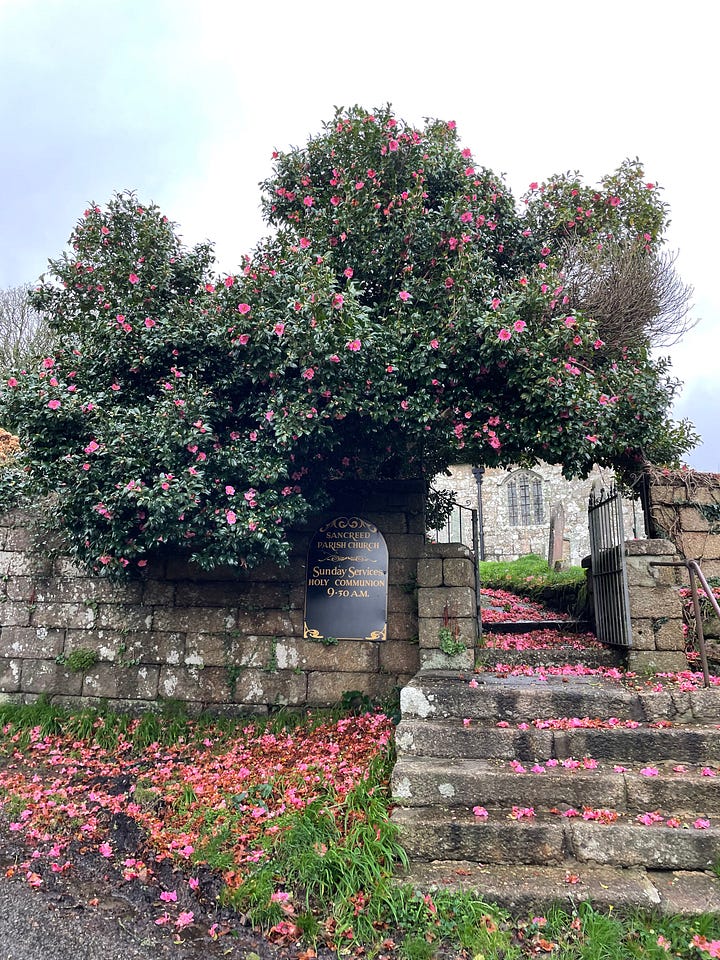
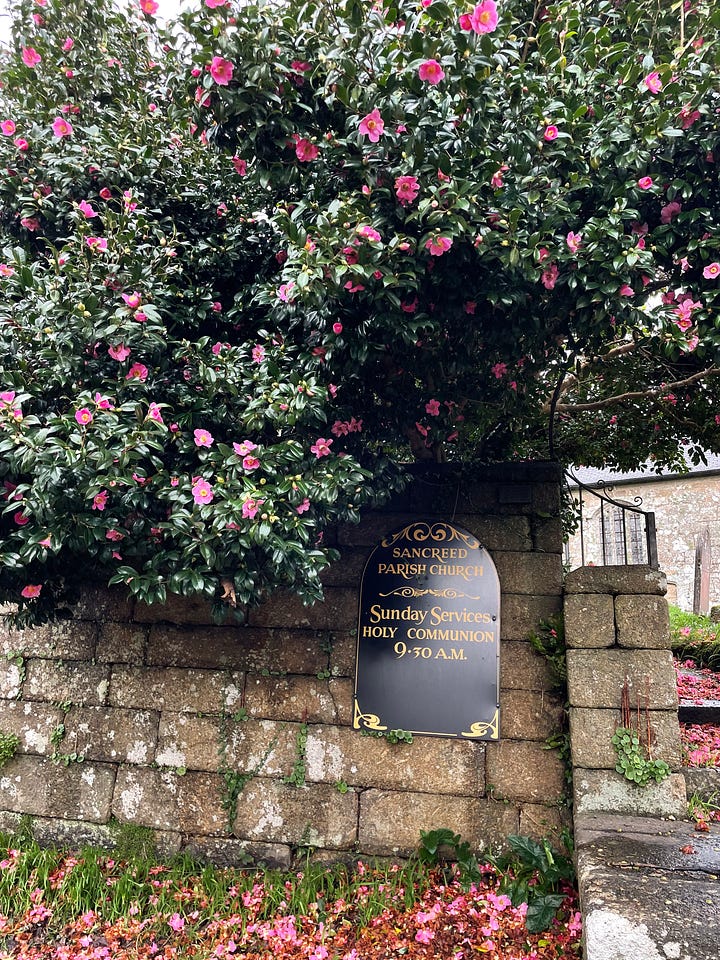
We next visited Sancreed church, St. Creden. I had read about it in a book my parents had bought me for Christmas. Listing all of Britains most significant or unusual churches.
I was first taken by the cerise pink camellia which had grown into a perfect archway over the church gate and created a carpet of pink petals underfoot which was a welcome sight in the heart of Winter.

The wind had really picked up again at this point. The church is referred to in 12th century documents, but its design is typical of early Celtic religious sites, both Pagan and Christian. Inside the remnants of Christmas were still to be seen, a small nativity in the corner. But I was drawn to the windows, which were decorated with the pink Camelia branches from the entrance. very simply. The church itself wasn’t particularly warm, but it had a lovely light to it. And the carved wooden seating in there was magnificent, and I believe of medieval origin.
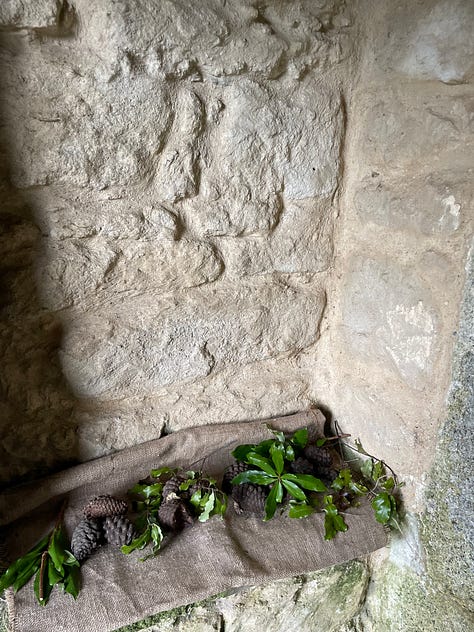
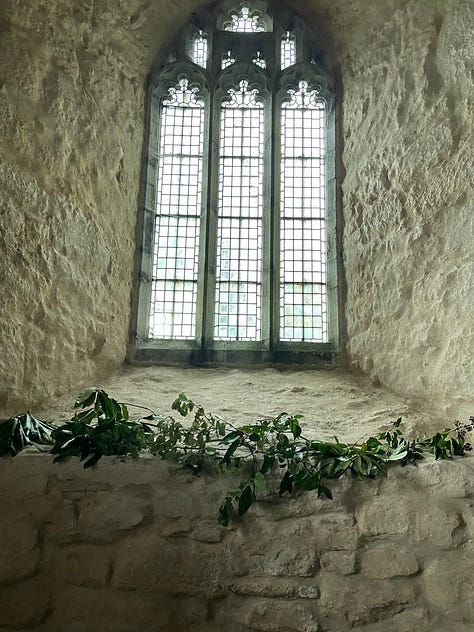
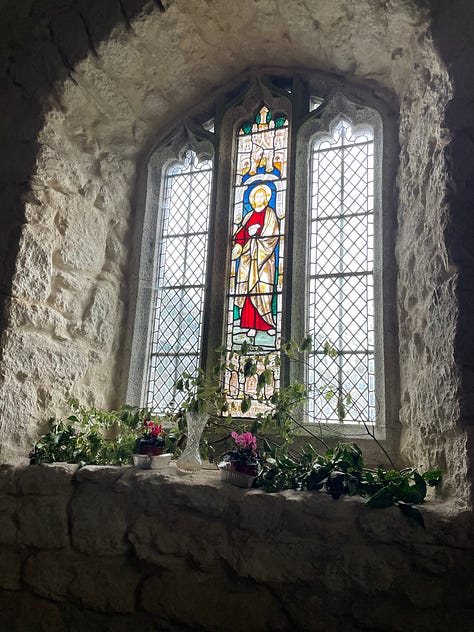
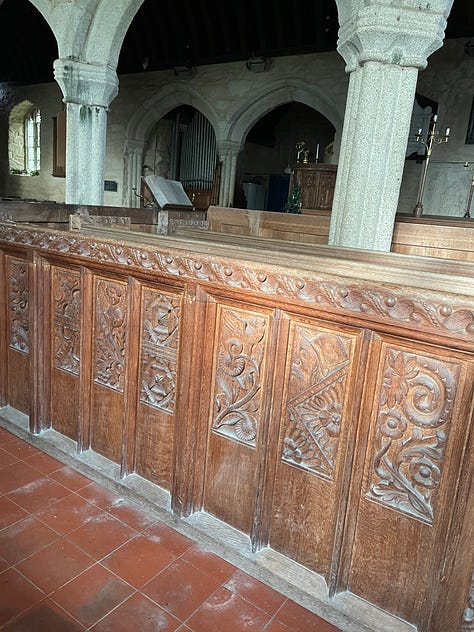

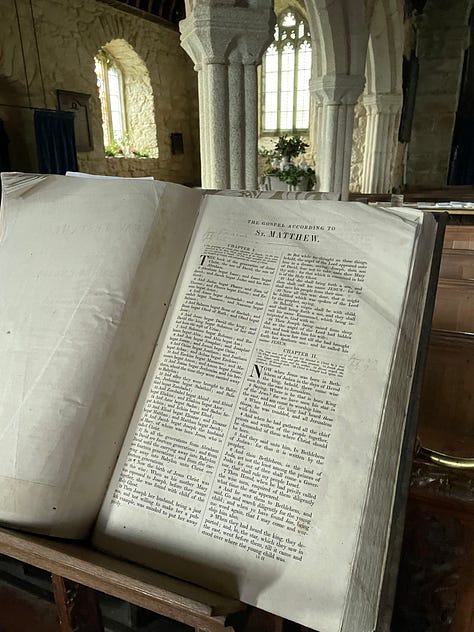
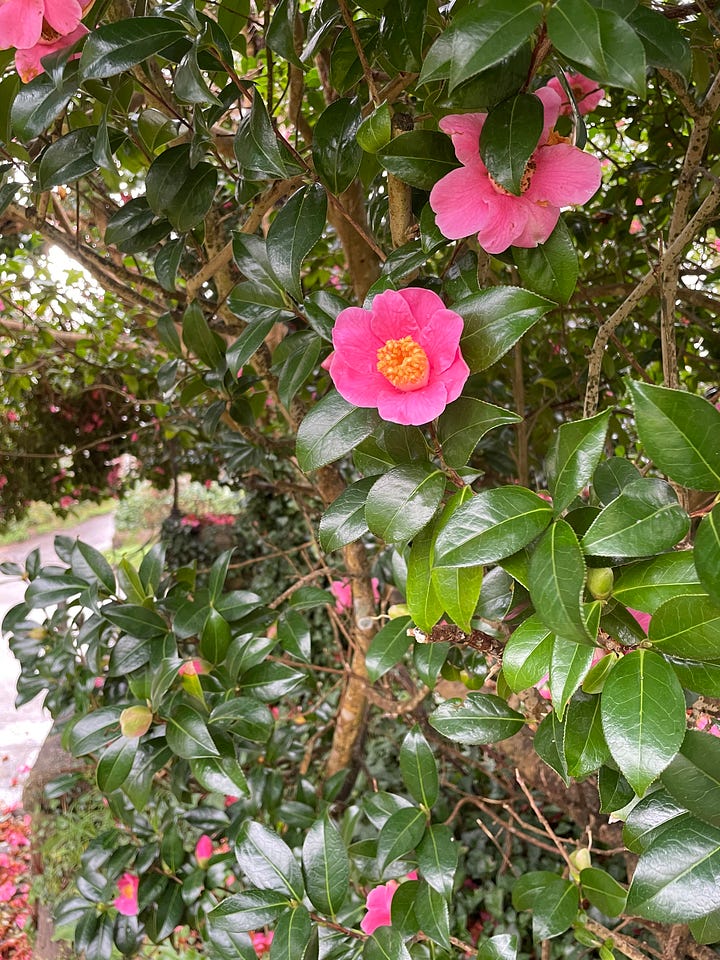
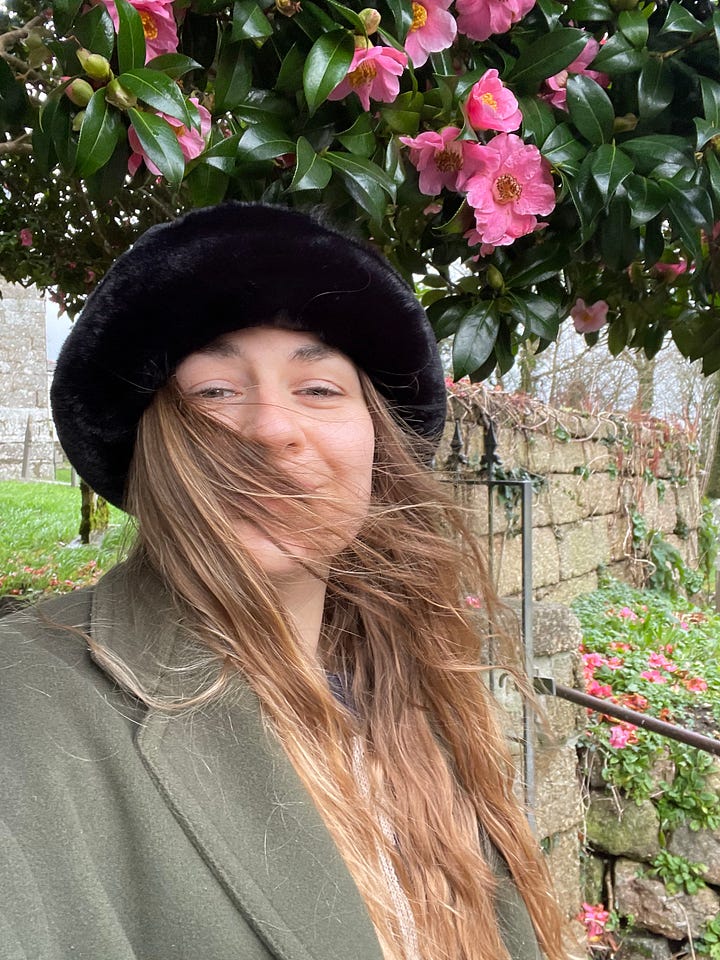
We then visited a pub in St Just that Katie and I had frequented together in May. The Star Inn. Lucky for us the fire was lit, and the Guinness was delicious. The man sat up at the bar was a Jack Russell connoisseur and said Kipper would be a “perfect dog” if he wasn’t so rough coated, but that he thought he had wonderful long legs. It was lovely being sat in here for an hour, watching the comings and goings of the locals.

Ben was quite ready to go home at this point, but I mentioned Carn Brea, a lovely walk which I think Kipper would enjoy and it was on our way home, so really not much extra effort at all. We drove past fields of gold, and on closer inspection discovered they were Daffodils. It felt so strange seeing Daffodils on mass, in early January. The climate here really is so unusually different.
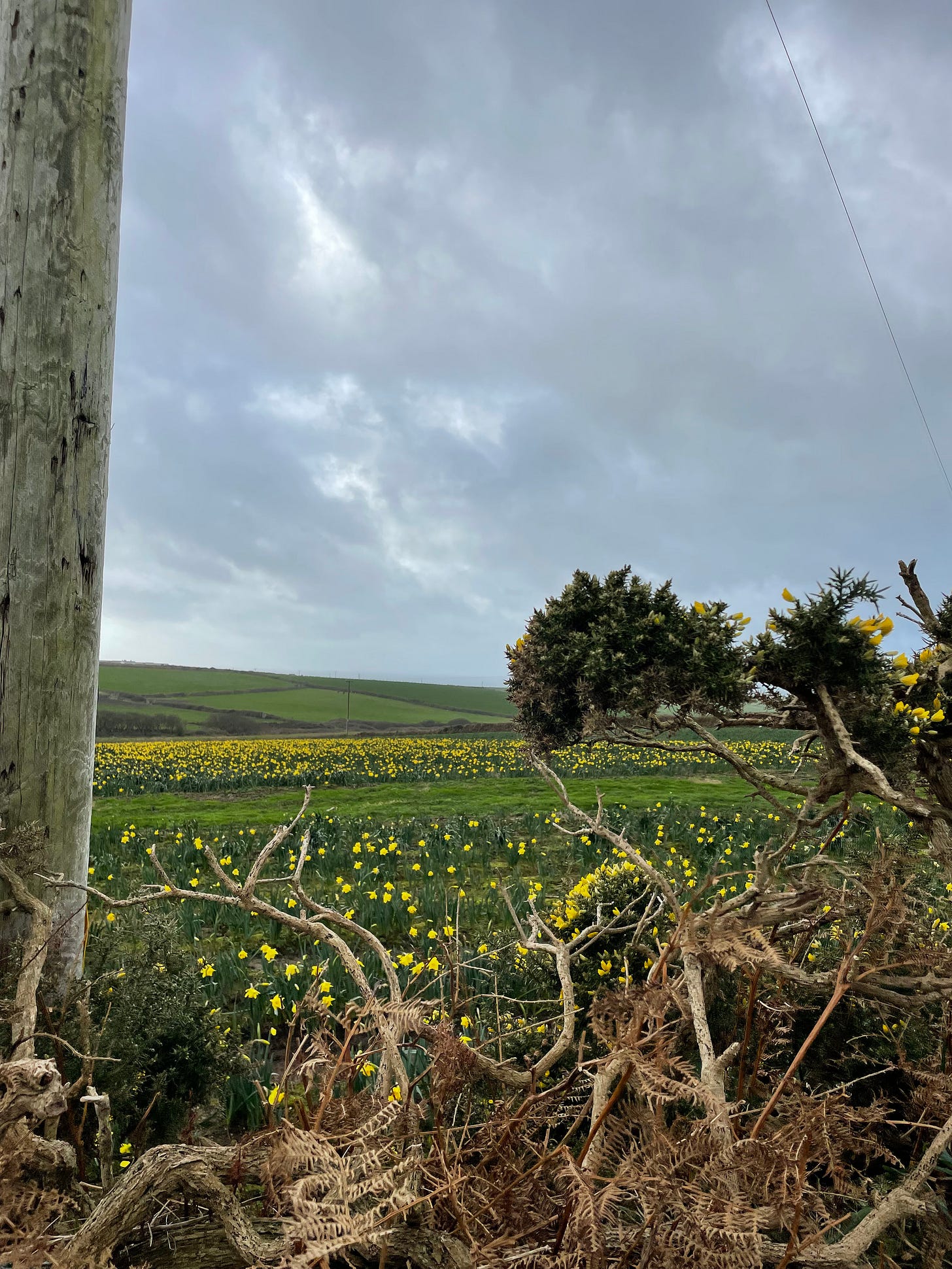
As we approached Carn Brea, the sun started to beam again. Which made the strong winds, meaning I couldn’t wear my hat, more bearable. It is the kind of wind that turns Kipper into a wild one. He charged up the hill, and my anxious thoughts raced about the wild ponies that had last been here last time, but which thankfully had taken shelter elsewhere today and weren’t at the top. You may notice that many of the places we have visited have “Carn” in the name. This is a Cornish word literally meaning “a pile of rocks”. I suppose that its half true. Yet this “pile of rocks” are actually the remains of barrows (approximately 10, some neolithic).
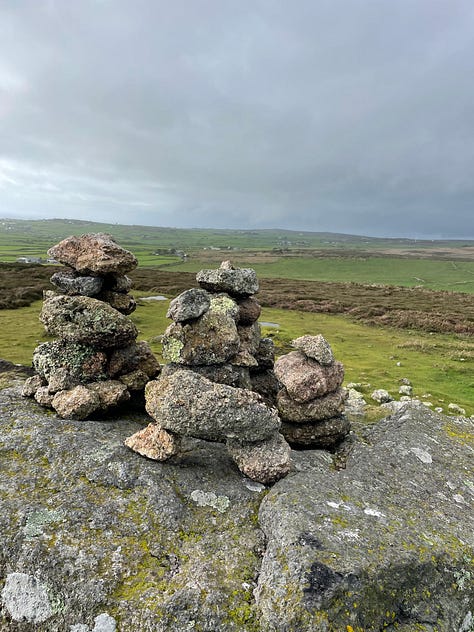

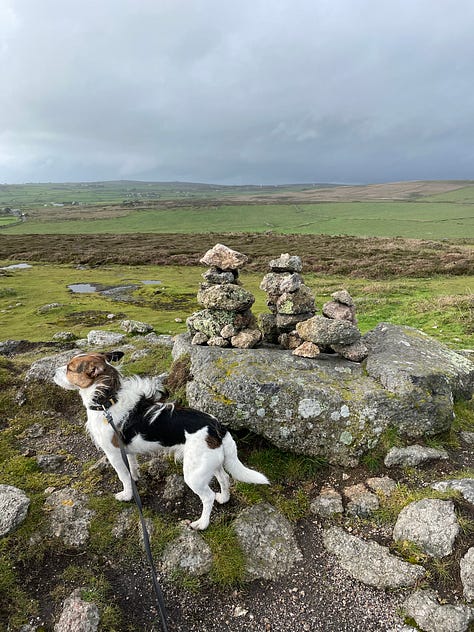
Carn Brea is the most westerly hill, with views out to the Scilly Isles, and Lands end lighthouse on a good day. It is a place of significance, and considered to be connected to many other ancient burial sites along the coast, from Lands End to St Just. You will also notice the beacon at the top of the hill. This is still lit every Midsummer’s eve, to celebrate the solstice, starting a series of beacon lighting across the county.
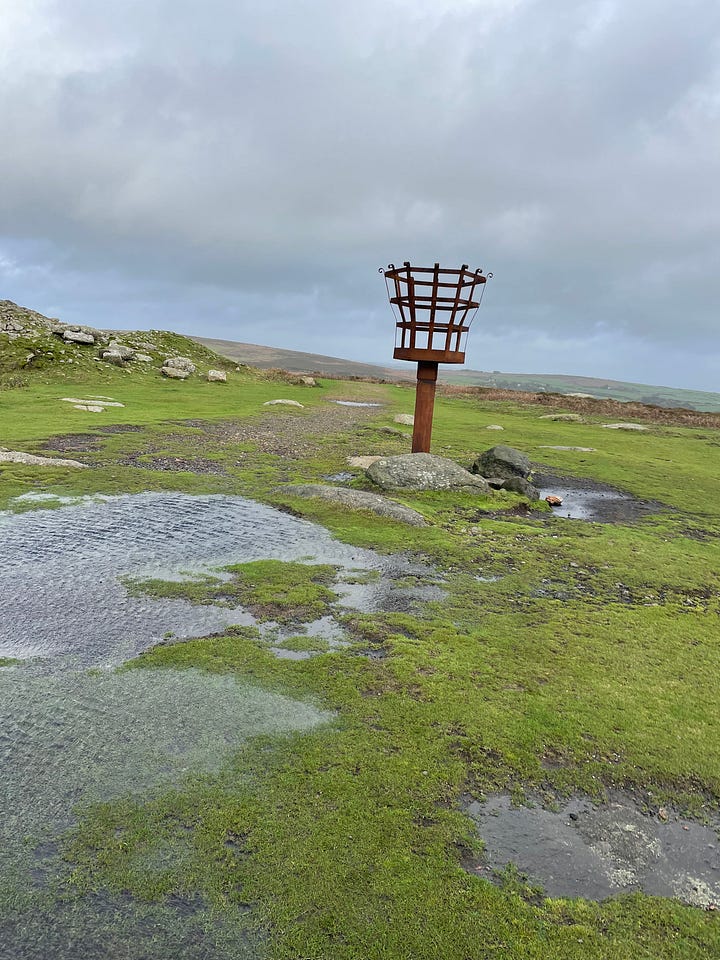
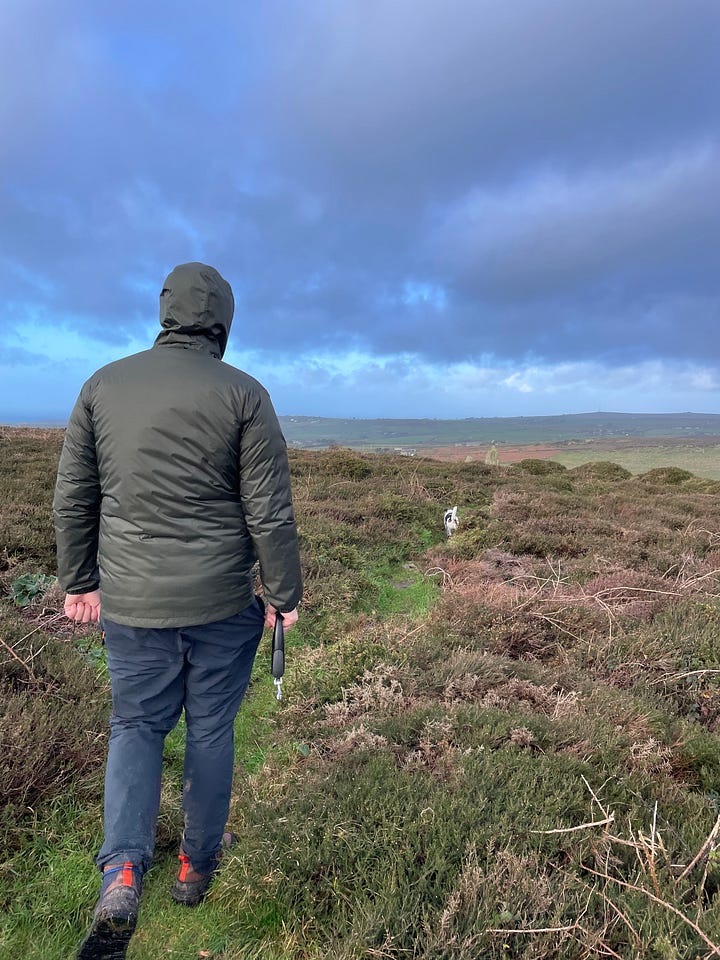
It was so wild and blowy at the top that Ben and I were being pushed back and forth by the force of the wind, it was exhilarating to feel the wind pushing against us, through our hair and pulling our bodies. The perfect way to spend the second day of the year, if you ask me. Nothing better in fact.
